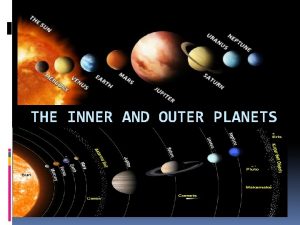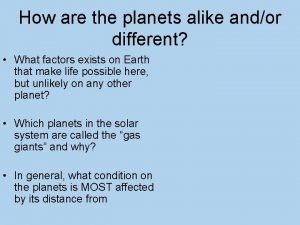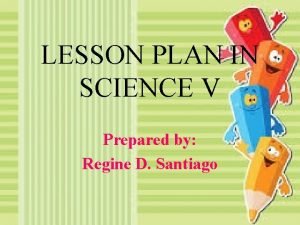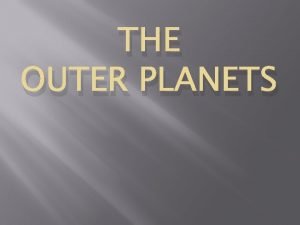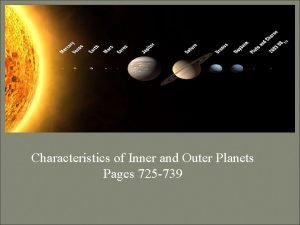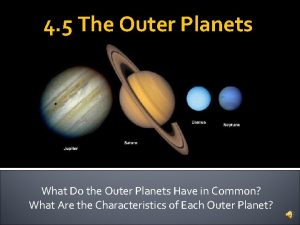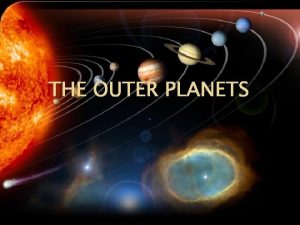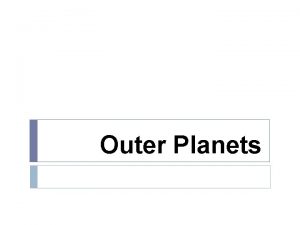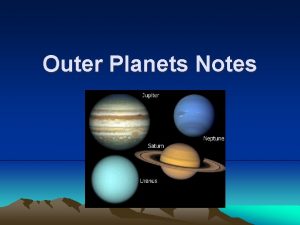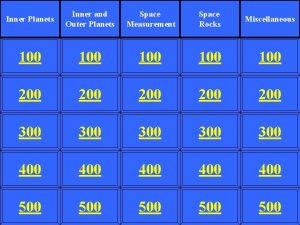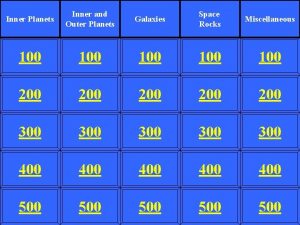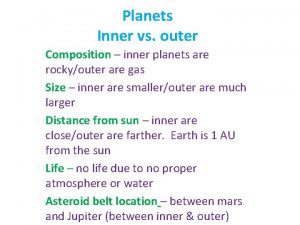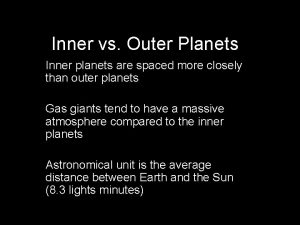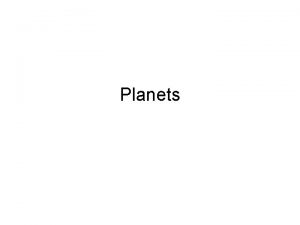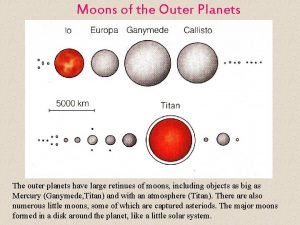The Inner and Outer Planets The Inner Planets













- Slides: 13

The Inner and Outer Planets

The Inner Planets �Terrestrial �High temperatures �Closer to the Sun �Closer to each other

Mercury Closest to the Sun Only 88 days to orbit Many craters Temperature extremes • 400 C during day, -180 at night Basically no atmosphere

Venus Earth’s sister planet Morning and evening star Thick atmosphere of CO 2 and Sulfur Longer day than year Spins opposite than other planets Over 500 C all the time

Earth Home sweet home Only planet with sustained life Hydrosphere (water) Atmosphere made up of N, O, CO 2 Comfy temps

Mars Frozen polar CO 2 caps Smaller than Earth Slightly longer day and year Very cold Largest mountain in solar system • Olympus Mons Thin atmosphere

Asteroid Belt Separates the inner and outer planets Possibly an annihilated planet Most asteroids hang out here

Outer Planets �Gas giants �No solid surface, just thick atmosphere �All very large �Very far apart from each other �All have rings

Jupiter Could hold 1300 Earths Almost big enough to be a star 12 EY = 1 Jovian year 1 Jovian day = 12 EH Huge storms Great red spot “hurricane” larger than Earth Some moons may have water

Saturn 29 years to orbit Large rings made of ice and dust 10 hour day Possibly still forming Tilts itself

Uranus Blue in color due to methane gas 84 years to orbit Rotates sideways Very cold • -250 C

Neptune Methane atomosphere 164 years to orbit -250 c temps 30 times farther from the sun than Earth

Pluto
 What separates the inner and outer planets
What separates the inner and outer planets What separates the inner planets and outer planets
What separates the inner planets and outer planets Inner terrestrial planets
Inner terrestrial planets What do the first four outer planets have in common
What do the first four outer planets have in common How many days are in saturn's year
How many days are in saturn's year What separates the inner and outer planets
What separates the inner and outer planets My very excited mother planets
My very excited mother planets Planet andor
Planet andor Inner outer planets venn diagram
Inner outer planets venn diagram By listening to my inner defender voice i can be sure that
By listening to my inner defender voice i can be sure that Saturn size compared to earth
Saturn size compared to earth Jovian planets share all of the following traits except
Jovian planets share all of the following traits except Characteristics of the inner planets
Characteristics of the inner planets What do all the outer planets have in common
What do all the outer planets have in common





